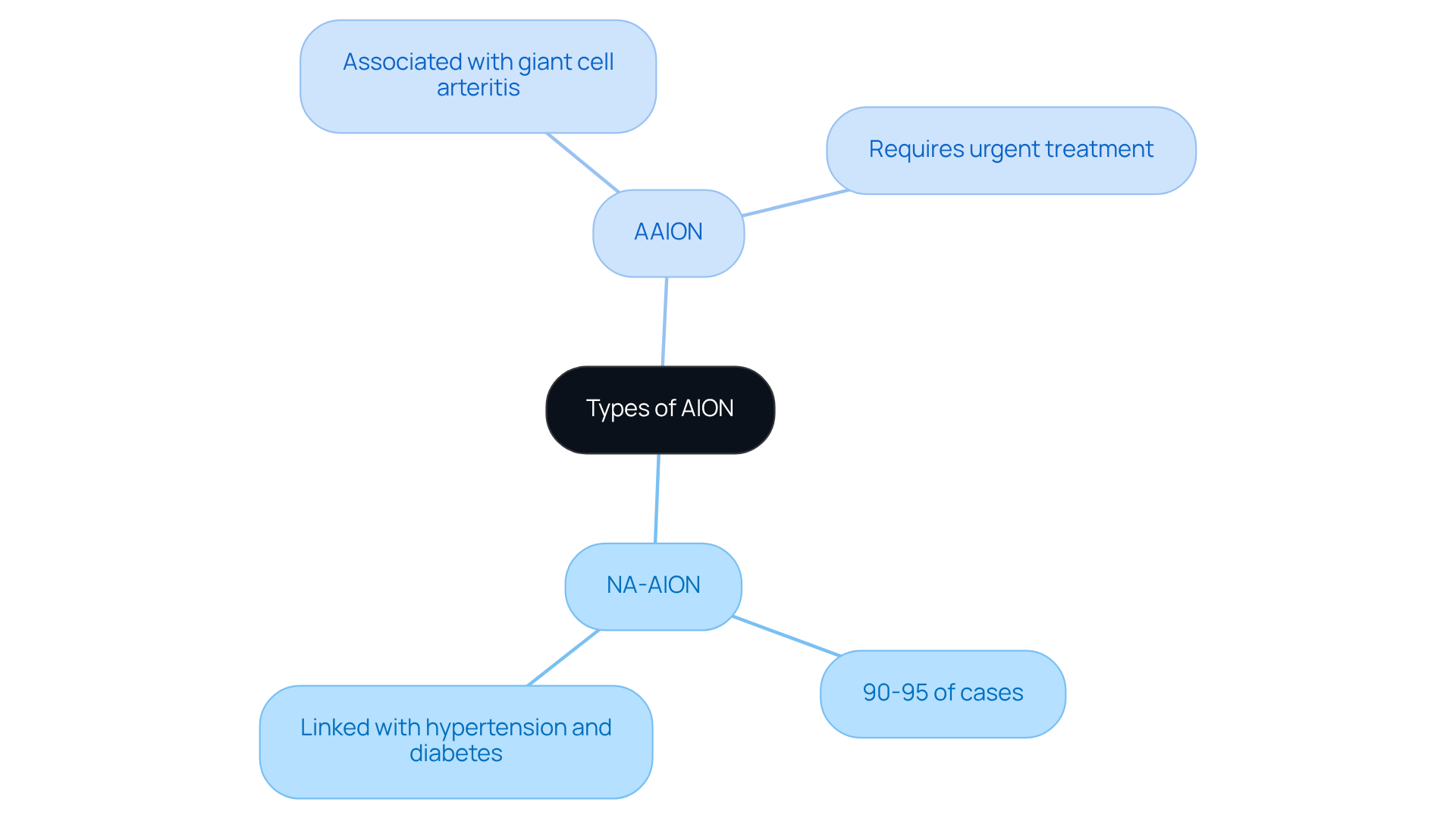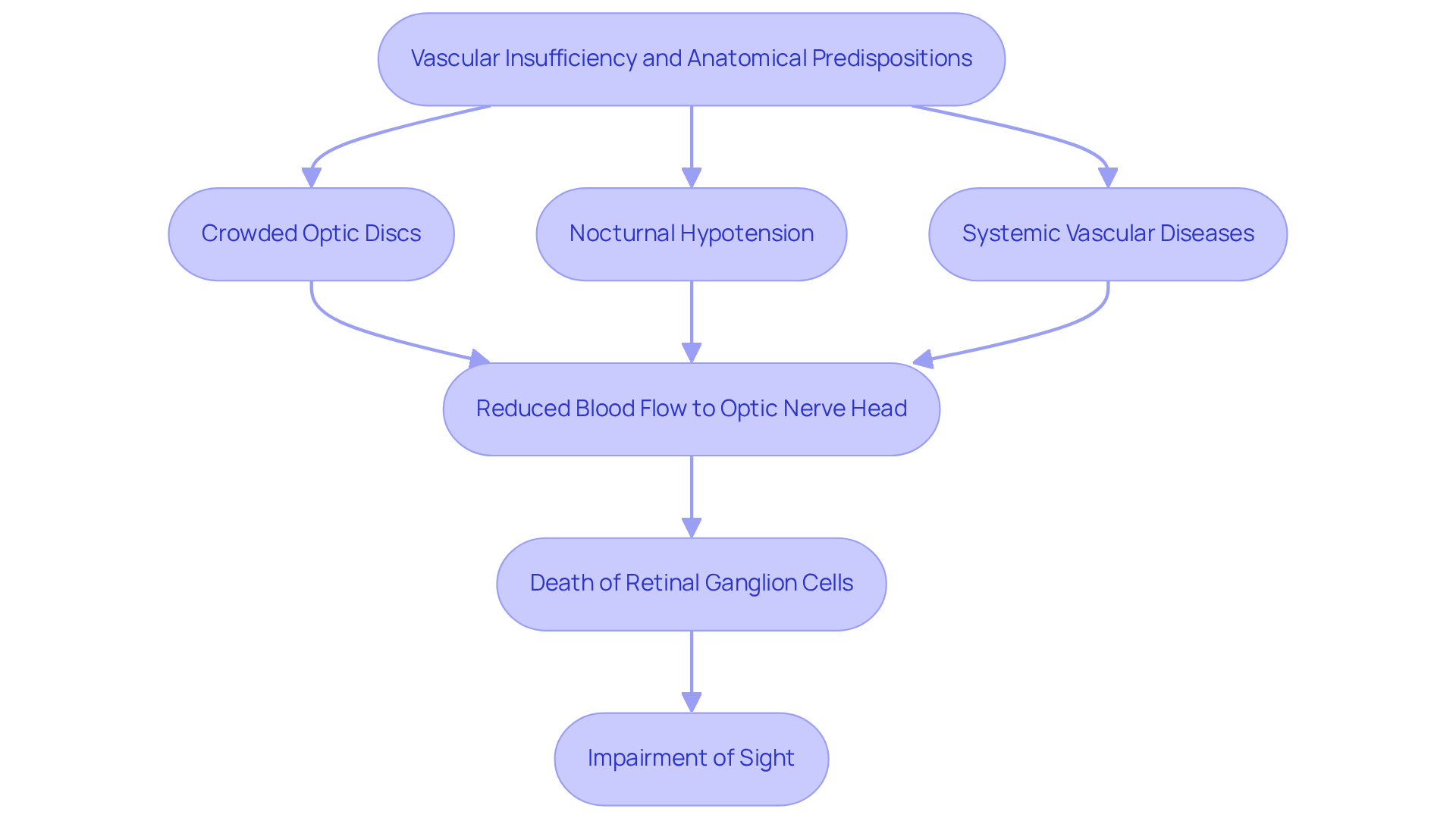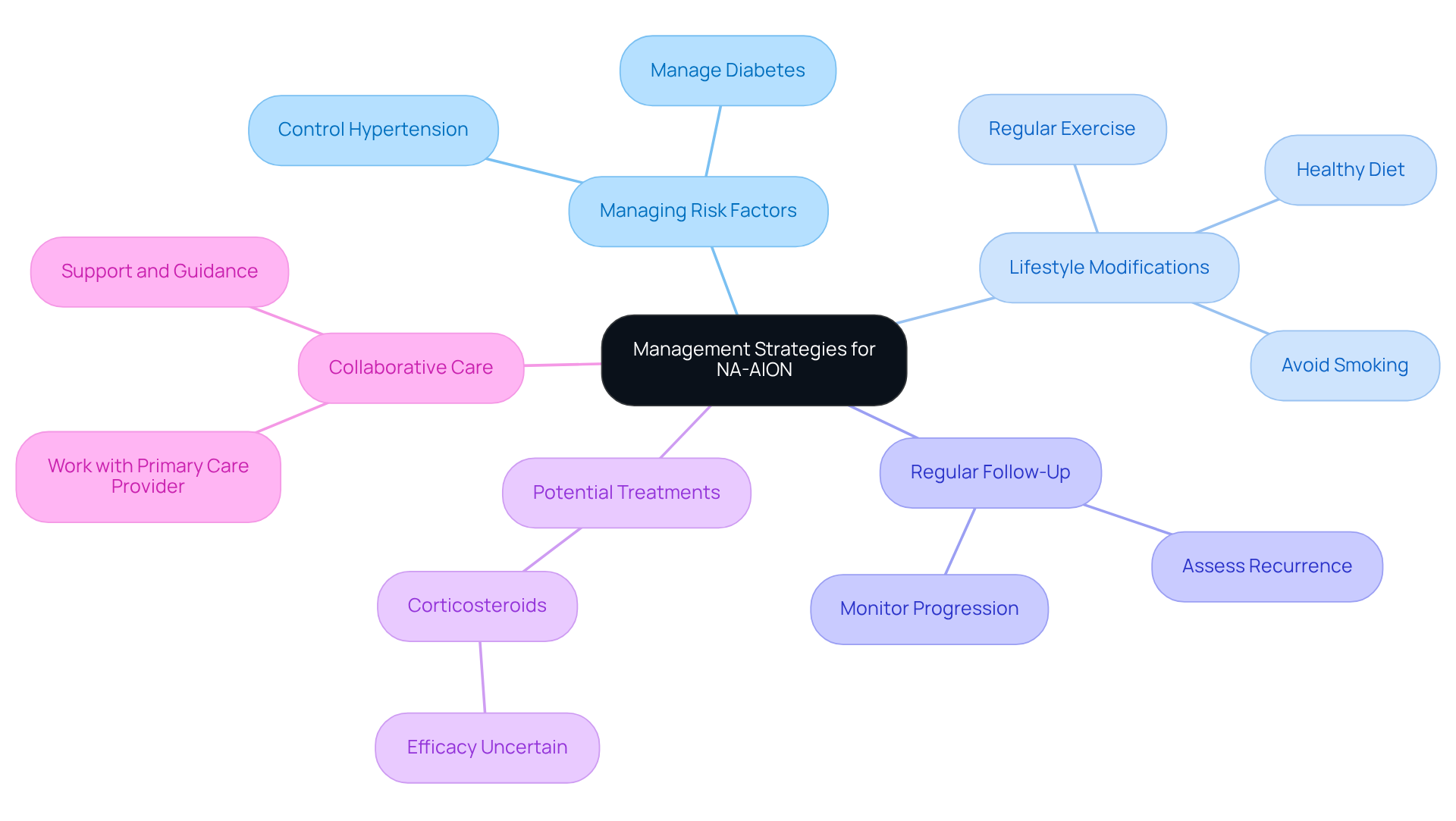Posted by: Northwest Eye in General on November 15, 2025
Introduction
Understanding the complexities of anterior ischemic optic neuropathy (AION) is crucial for anyone facing sudden vision loss. This condition, marked by insufficient blood flow to the optic nerve, can feel alarming and overwhelming. There are two primary types – arteritic and non-arteritic – each presenting its own unique challenges.
We understand that seeking clarity and effective management strategies can be daunting. You might be wondering how to best comprehend and cope with the implications of AION while ensuring timely intervention and care. It’s common to feel a mix of emotions during this time, and we are here to help you through this process.
Define Anterior Ischemic Optic Neuropathy (AION)
Anterior ischemic optic neuropathy can be a distressing condition, often marked by sudden vision loss due to insufficient blood flow to the nerve head. We understand how alarming this can be, as anterior ischemic optic neuropathy can lead to damage of the optic nerve, resulting in visual impairment.
Anterior ischemic optic neuropathy is primarily categorized into two types:
- Arteritic
- Non-arteritic
The non-arteritic type is more common. It’s common to feel overwhelmed when faced with such medical terms, but knowing the differences can help you understand your situation better.
Recognizing the symptoms of this condition is vital. If you notice any sudden changes in your vision, it’s important to seek medical attention promptly. We are here to help you through this process and ensure you receive the care you need.
Remember, you are not alone in this journey. Many others have faced similar challenges and have found ways to cope and manage their condition effectively. Your feelings are valid, and taking action is the first step towards regaining control over your health.

Classify Types of AION: NA-AION and Others
We understand that navigating health conditions can be overwhelming. The condition we’re discussing is primarily classified into two main types:
- Non-Arteritic Anterior Ischemic Optic Neuropathy (NA-AION)
- Arteritic Anterior Ischemic Optic Neuropathy, which is also known as anterior ischemic optic neuropathy (AAION).
NA-AION makes up about 90-95% of these cases and is often linked with systemic conditions like hypertension and diabetes. It’s common to feel concerned about how these factors might affect your vision. In contrast, AAION is typically associated with giant cell arteritis, which requires urgent treatment to prevent further vision loss.
Understanding these classifications is crucial for the effective diagnosis and management of anterior ischemic optic neuropathy. We are here to help you through this process, ensuring you receive the care and support you need.

Explain Pathogenesis of Non-Arteritic AION
We understand that dealing with anterior ischemic optic neuropathy (AION) can be concerning. The pathogenesis of anterior ischemic optic neuropathy involves a combination of vascular insufficiency and anatomical predispositions. Factors like:
- crowded optic discs
- nocturnal hypotension
- systemic vascular diseases
can lead to anterior ischemic optic neuropathy by reducing blood flow to the optic nerve head.
This reduced blood flow can lead to anterior ischemic optic neuropathy, which results in the death of retinal ganglion cells and subsequent impairment of sight. It’s common to feel anxious about these medical terms, but knowing the underlying mechanisms can help you understand your condition better.
Understanding these mechanisms is vital for identifying patients at risk of anterior ischemic optic neuropathy and implementing preventive strategies. We are here to help you through this process and provide the support you need.

Describe Clinical Features of NA-AION
We understand that experiencing vision changes can be alarming. Patients with anterior ischemic optic neuropathy often notice a sudden, painless loss of vision in one eye, which is frequently first observed upon waking. This can be a distressing experience, and it’s important to recognize the signs.
Common clinical features include:
- A relative afferent pupillary defect
- Visual field defects
- Optic disc edema
You might describe the loss of sight as a gray or dark spot in your visual field. Recognizing these symptoms is crucial for the timely diagnosis and management of anterior ischemic optic neuropathy.
If you or someone you know is experiencing these symptoms, please know that you are not alone. Many have faced similar challenges, and there is support available. We are here to help you through this process, ensuring you receive the care you need.
Outline Management Strategies for NA-AION
We understand that facing vision loss can be incredibly challenging. Currently, there is no proven treatment to restore vision in patients suffering from anterior ischemic optic neuropathy. Our focus is on managing underlying risk factors, such as controlling hypertension and diabetes, while also educating you about lifestyle modifications that can help reduce the risk of anterior ischemic optic neuropathy.
Regular follow-up is essential to monitor for any potential progression or recurrence of your condition. It’s common to feel uncertain about what lies ahead, and we want to reassure you that in some cases, corticosteroids may be considered, although their efficacy remains uncertain.
Collaborative care with your primary care provider is crucial for comprehensive management. We are here to help you through this process, ensuring you receive the support and guidance you need. Remember, you are not alone in this journey.

Conclusion
Understanding anterior ischemic optic neuropathy (AION) is essential for anyone facing the challenges of this condition. We understand that navigating this journey can be overwhelming, and this article has highlighted the critical aspects of AION, including its definitions, classifications, underlying mechanisms, clinical features, and management strategies. By grasping these concepts, individuals can better navigate their health journey and seek appropriate care.
Key insights discussed include the distinction between non-arteritic and arteritic forms of AION, with non-arteritic being the more prevalent type. It’s common to feel confused about the pathogenesis, particularly in the context of risk factors like hypertension and diabetes. Understanding these factors provides a clearer picture of how this condition develops. Additionally, recognizing the clinical features and symptoms is vital for timely diagnosis and intervention. While there is no definitive treatment to restore vision, managing underlying health issues and adopting lifestyle changes can play a significant role in care.
As your journey through anterior ischemic optic neuropathy unfolds, it is crucial to remain informed and proactive. Seeking regular medical advice, understanding the importance of managing risk factors, and connecting with support networks can empower you to take control of your health. Awareness and education about AION can lead to better outcomes and a more supportive community for those affected. Remember, we are here to help you through this process.
Frequently Asked Questions
What is Anterior Ischemic Optic Neuropathy (AION)?
Anterior Ischemic Optic Neuropathy (AION) is a condition characterized by sudden vision loss due to insufficient blood flow to the optic nerve head, potentially leading to damage of the optic nerve and visual impairment.
What are the two main types of AION?
The two main types of AION are Arteritic Anterior Ischemic Optic Neuropathy (AAION) and Non-Arteritic Anterior Ischemic Optic Neuropathy (NA-AION). NA-AION is the more common type.
What is Non-Arteritic Anterior Ischemic Optic Neuropathy (NA-AION)?
NA-AION accounts for about 90-95% of AION cases and is often associated with systemic conditions such as hypertension and diabetes.
What is Arteritic Anterior Ischemic Optic Neuropathy (AAION)?
AAION is typically linked with giant cell arteritis and requires urgent treatment to prevent further vision loss.
What should I do if I notice sudden changes in my vision?
It is important to seek medical attention promptly if you notice any sudden changes in your vision.
How can I cope with the challenges of AION?
Many individuals facing AION have found ways to cope and manage their condition effectively. Seeking support and understanding your situation can help you regain control over your health.






